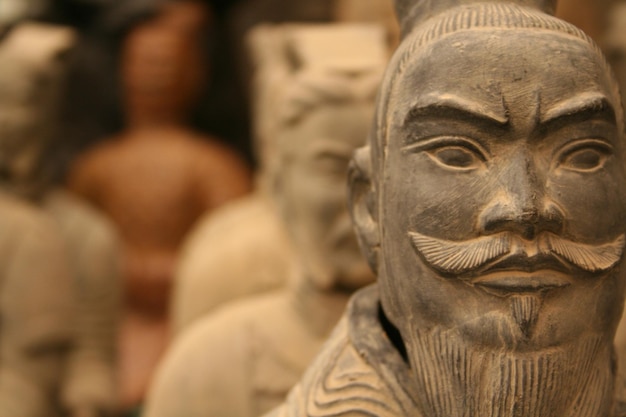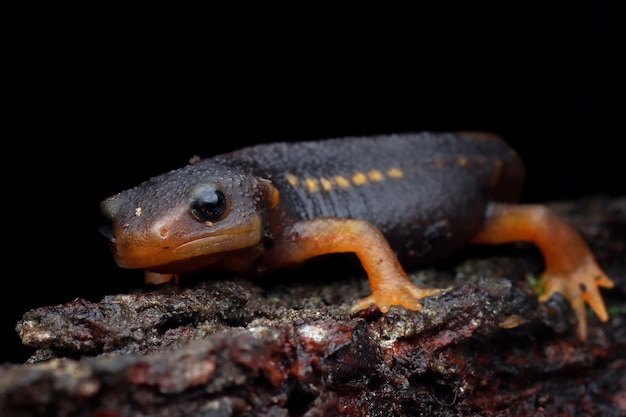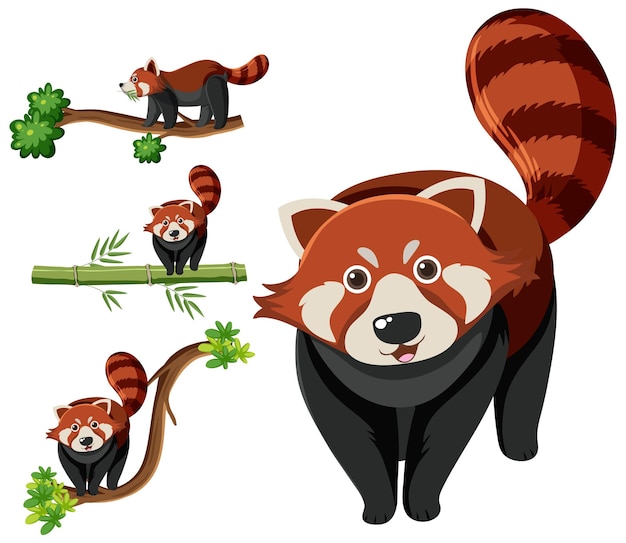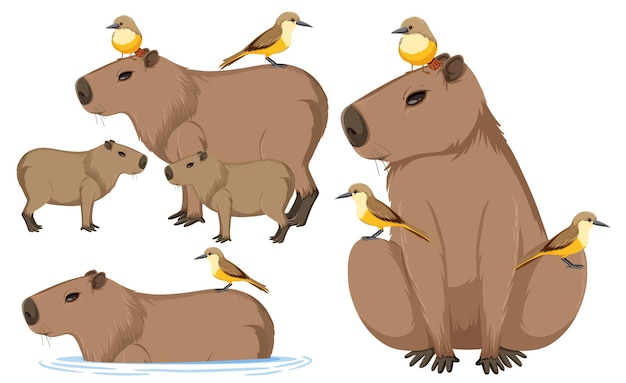Facts About Wildfires – What You Need to Know
Wildfires are a natural part of forest ecosystems.
On average, wildfires burn an area of 4.5 million acres in the United States each year.
Smokey Bear, a popular mascot, was created to educate people about preventing wildfires.
Lightning strikes are responsible for a significant number of wildfires.
Humans are responsible for starting over 80% of wildfires in the United States.
Climate change has contributed to longer and more intense wildfire seasons.
Wildfires release large amounts of carbon dioxide, contributing to greenhouse gas emissions.
Dead plant material, known as fuel, provides the perfect conditions for wildfires to spread.
Wildfires can jump rivers, roads, and even firebreaks due to flying embers.
Firefighters use various techniques, including bulldozers and backfires, to control wildfires.
Wildfires can have devastating effects on wildlife populations and their habitats.
Some plants have adapted to benefit from wildfires, such as the lodgepole pine, whose cones require the heat of a fire to open and release their seeds.
Smoke from wildfires can travel thousands of miles, affecting air quality in distant areas.
Aircraft, such as water bombers, are often utilized to drop fire retardants to help suppress wildfires.
Wildfires can cause significant economic losses, including damage to infrastructure and loss of agricultural resources.
The Great Fire of London in 1666, which destroyed a large part of the city, was one of the most famous wildfires in history.
Wildfires can create their own weather patterns, including fire whirls and pyrocumulus clouds.
Some regions, like California, experience fire seasons that extend nearly throughout the year.
Climate change is projected to increase the frequency and severity of wildfires.
Wildfires can cause erosion and soil degradation, which can lead to long-term ecological impacts.
The largest recorded wildfire in the United States was the Great Fire of 1910, which burned about three million acres in Idaho and Montana.
Ash from wildfires contains nutrients that can replenish soil fertility when it settles.
Wildfires can lead to an increased risk of mudslides and flash flooding during heavy rains.
Firebreaks, cleared areas with no flammable material, are created to prevent wildfires from spreading.
Wildfires can travel faster uphill due to the increased availability of oxygen.
Indigenous communities have used controlled burns as a land management tool for centuries to prevent catastrophic wildfires.
Wildlife species that are well-adapted to fire, like certain bird species, may benefit from post-fire habitat conditions.
Smoke from wildfires can pose serious health risks, particularly for people with respiratory issues.
Wildfires can produce intense heat, often reaching temperatures of over 1,400 degrees Fahrenheit (760 degrees Celsius).
Fire tornadoes, also known as firenadoes, are rare but can occur during extreme wildfires.
Some plants, like the eucalyptus tree, have adaptations that promote the spread of fire, as their leaves are highly flammable.
Controlled burns, when conducted properly, can help prevent more destructive and unmanageable wildfires.
Wildfires are a major concern for national parks and other protected areas, as they can threaten fragile ecosystems.
Smokejumpers, highly trained firefighters, parachute into remote areas to fight wildfires.
The term wildfire comes from the Old English word wiltēar, meaning willow and blaze.
Wildfires can lead to the displacement of communities and the loss of homes and livelihoods.
Australia experiences some of the most severe wildfires, with the Black Saturday bushfires in 2009 being one of the deadliest in the country’s history.
Wildfires can cause power outages and damage electrical infrastructure.
The increased accumulation of dead trees in forests, due to factors like insect infestations, has contributed to a greater risk of wildfires in some areas.
Wildfire smoke can have a negative impact on air travel, leading to canceled or delayed flights.
Rapid response is crucial in containing wildfires, as they can double in size within minutes under favorable conditions.
Wildlife rescue efforts are often required after major wildfires, as many animals flee or are injured during the events.
In some Native American cultures, fire is considered a cleansing and rejuvenating force, and controlled burns play a vital role in keeping ecosystems healthy.
Natural fire-resistant barriers, such as rivers or rocky terrain, can help prevent the spread of wildfires.
Effective public education campaigns about preventing wildfires have led to a decrease in accidental fire starts in recent years.
Interesting Facts about Border Collies
Border collies are known for their exceptional intelligence.
These dogs have a strong herding instinct.
Border collies are highly energetic and require plenty of exercise.
They excel in various dog sports, including agility and obedience trials.
Border collies are often considered one of the most intelligent dog breeds.
With proper training, they can learn a wide range of commands and tricks.
Border collies have a strong desire to please their owners.
They have a natural ability to understand and respond to verbal and non-verbal cues.
Border collies are highly focused and have great attention to detail.
They are considered excellent working dogs and are often used in sheep farming.
Border collies have a distinctive stalk and stare herding technique.
They have a strong work ethic and are happiest when given a job to do.
Border collies have an incredible amount of stamina and endurance.
They are known for their lightning-fast reflexes and agility.
Border collies have a double coat that helps them stay warm in colder climates.
They come in a variety of coat colors, including black and white, red and white, and tri-color.
Border collies have a natural instinct to gather and control a group of animals.
They are highly trainable and excel in obedience training.
Border collies are often used in search and rescue operations.
They are known for their problem-solving skills and can quickly assess a situation.
Border collies have a strong bond with their owners and are extremely loyal.
They are good with children and other pets when properly socialized.
Border collies have a high prey drive and may try to herd small animals or children.
They have been bred for centuries for their herding abilities.
Border collies have a reputation for being workaholics.
They thrive in environments where they can be mentally and physically stimulated.
Border collies are highly adaptable and can live in various climates.
They have a strong sense of intuition and can anticipate their owner’s needs.
Border collies have been featured in movies and TV shows for their intelligence and agility.
They have been ranked as one of the smartest dog breeds by various sources.
Border collies are known for their intense, focused gaze.
They have a natural instinct to eye or control the movement of livestock.
Border collies have excellent problem-solving skills and can strategize to achieve a goal.
They are quick learners and are often used in police and military work.
Border collies have a sense of fairness and can detect when something is unfair.
They have a sensitive nature and can pick up on subtle cues from their owner.
Border collies are highly sensitive to their environment and may become stressed in chaotic settings.
They thrive in active households where they can engage in mentally and physically challenging activities.
Border collies can be taught to perform complex tasks and are often used as assistance dogs.
They are known for their agility and can excel in sports like flyball and Frisbee.
Border collies have been used in conservation efforts to protect endangered species.
They have a high level of impulse control and can resist distractions when focused on a task.
Border collies have a strong desire to work and may become unhappy if they don’t have a job to do.
They are excellent problem solvers and can find innovative ways to overcome obstacles.
Border collies are highly versatile and can adapt to various roles, from therapy dogs to competitive athletes.
Interesting Facts About the Blue Morpho Butterfly
Blue morpho butterflies are known for their stunning blue wings.
These butterflies are native to the rainforests of Central and South America.
The blue color of their wings is not due to pigment, but rather the reflection of light from microscopic scales.
Blue morphos have a wingspan of about 5-8 inches.
These butterflies are most active during the morning and late afternoon.
Blue morphos have short lifespans, often living only a few weeks.
They are known for their slow, graceful flight.
The underside of their wings is usually brown, providing camouflage.
Adult blue morphos primarily feed on rotting fruit and tree sap.
The bright blue coloration of their wings can vary in intensity depending on the angle and lighting.
Blue morphos are considered one of the largest and most beautiful butterfly species in the world.
The blue coloration of their wings helps them blend in with the sky, confusing predators.
Male blue morphos are typically more vibrant in color than females.
These butterflies are not poisonous to predators, but their bold colors act as a deterrent.
Blue morphos have a unique fluttering flight pattern, which helps them avoid being caught.
They have a wingspan that can rival a small bird’s.
Blue morphos are often sought after by collectors for their beauty.
These butterflies are highly sensitive to changes in their habitat, making them vulnerable to deforestation.
Blue morphos undergo a complete metamorphosis, starting as an egg, then becoming a caterpillar, pupa, and finally an adult.
The scientific name for the blue morpho butterfly is Morpho menelaus.
Blue morpho butterflies are known for their iridescent blue coloration.
The vibrant blue color of their wings is believed to play a role in attracting mates.
Blue morphos have long, slender bodies with six legs and two antennae.
The blue coloration of their wings can fade over time as the scales wear away.
Blue morphos are highly prized in the eco-tourism industry, attracting visitors to rainforest regions.
These butterflies are often featured in artwork and jewelry due to their stunning appearance.
Blue morphos are capable of flying long distances, sometimes crossing over oceans.
Blue morphos are typically found in the understory of the rainforest, avoiding direct sunlight.
The bright blue color of their wings can be spotted from a distance, making them easy to track.
Blue morpho butterflies have a symbiotic relationship with certain plant species, aiding in pollination.
These butterflies have delicate mouthparts called proboscises, which they use to sip nectar.
Blue morphos are able to detect ultraviolet light, helping them navigate and find food sources.
Blue morphos are primarily active during the wet season when there is an abundance of nectar-producing flowers.
The emergence of a blue morpho butterfly from its chrysalis is a beautiful and delicate process.
The wings of blue morphos are so delicate that they can be easily damaged if handled improperly.
Blue morphos are often used as symbols of transformation and change due to their metamorphosis.
These butterflies are important indicators of environmental health, as their presence or absence can indicate the state of a particular ecosystem.
In some cultures, blue morpho butterflies are considered sacred and are associated with spiritual transformation.
Blue morphos have adapted to have elongated forewings, which increases their gliding ability.
The blue color on the wings of blue morphos is caused by the diffraction of light, similar to how a prism works.
The scales on the wings of blue morphos are arranged in such a way that the blue color appears iridescent, shimmering in different shades depending on the viewing angle.
Blue morphos have a defense mechanism called flash behavior, where they suddenly flash their wings open to startle predators.
The distinctive blue color of male blue morphos is believed to attract females for mating.
Blue morphos are known to migrate, flying long distances to find suitable breeding grounds.
The mesmerizing blue color of blue morpho butterflies has captivated humans for centuries, making them popular subjects in art, literature, and photography.
Asteroid Belt – Fascinating Facts You Should Know
The asteroid belt is a region located between the orbits of Mars and Jupiter.
The asteroid belt is made up of millions of small and irregularly shaped rocks.
The total mass of all the asteroids in the belt is less than that of Earth’s moon.
The largest asteroid in the belt is Ceres, which is about 590 miles in diameter.
The asteroid belt is believed to be remnants from the early formation of our solar system.
Asteroids in the belt vary in size from tiny pebbles to objects several hundred miles in diameter.
The asteroid belt is approximately 250 to 370 million miles away from Earth.
Scientists estimate that there are between 1.1 and 1.9 million asteroids in the belt.
The first asteroid in the belt was discovered in 1801 by Italian astronomer Giuseppe Piazzi.
The asteroid belt is a fascinating area for scientific exploration and research.
Some asteroids in the belt have been found to contain valuable metals and minerals.
The asteroid belt is constantly changing and evolving due to gravitational interactions.
The orbits of asteroids in the belt can be highly eccentric and inclined.
The asteroid belt plays a significant role in shielding inner planets from potential impacts.
The Dawn spacecraft explored the asteroid Vesta in 2011 and 2012, providing valuable data.
The asteroid belt is not a dense field of rocks but rather a vast and widely spaced collection.
While the asteroids in the belt are relatively close together, they are still millions of miles apart.
The asteroid belt poses very little threat to Earth in terms of potential collisions.
The main reason asteroids in the belt do not collide with each other is due to their vast distances.
Gravity from Jupiter’s massive presence has significantly influenced the dynamics of the asteroid belt.
The composition of asteroids in the belt varies, with some being rocky and others containing ice.
The asteroid belt is a prominent feature in many science fiction stories and movies.
The suggestion that the asteroid belt was once a planet that broke apart is a popular theory.
The Hubble Space Telescope has been used to study asteroids within the belt.
The sizes and shapes of asteroids in the belt vary greatly, adding to its diversity.
The distance between asteroids in the belt is typically several million miles.
Some asteroids in the belt have been identified as potential candidates for future manned missions.
The asteroid belt has been referred to as a cosmic junkyard due to its collection of rocks.
The total volume of all the asteroids in the belt is estimated to be less than 4% of the Moon’s volume.
The asteroid belt is an important area for astronomers to study the history of our solar system.
The gravitational forces within the belt can sometimes cause asteroids to collide or change orbits.
The discovery of asteroids in the belt has led to advancements in our understanding of the solar system.
The presence of the asteroid belt has influenced the formation and evolution of the inner planets.
Some asteroids in the belt have been found to have moons of their own.
The asteroid belt is not evenly distributed, with most asteroids concentrated in specific regions.
The Apollo asteroid group, associated with Earth-crossing orbits, originated from the asteroid belt.
Some rare types of meteorites found on Earth are believed to come from the asteroid belt.
Scientists continue to study the asteroid belt to learn more about the processes of planetary formation.
The majority of asteroids in the belt are composed of rock and metal.
The asteroid belt is a challenging environment for spacecraft due to its high concentration of small rocks.
The formation of the asteroid belt is closely linked to the formation of Jupiter.
The asteroid belt has been suggested as a potential source of resources for future space mining.
The movement and dynamics of asteroids in the belt are influenced by the gravitational pull of nearby planets.
The asteroid belt is one of the main sources of meteoroids that enter Earth’s atmosphere.
The study of asteroids in the belt provides valuable insights into the early stages of our solar system’s development.
Apache Facts – Discovering the Untold Truth about Apache
Apache, the iconic Native American tribe, has a rich cultural heritage.
The Apache people are known for their fierce warrior spirit and bravery.
Apache women played a crucial role in their society, holding positions of power and influence.
Apache is also the name of a widely used open-source web server software.
Apache web server is known for its scalability and robustness.
Apache software foundation, the organization behind Apache web server, is dedicated to promoting open-source software.
Apache web server powers a significant portion of the internet, handling millions of requests every day.
Apache web server is highly configurable, allowing users to tailor it to their specific needs.
Apache web server has a thriving community of developers constantly improving and enhancing its functionality.
Apache web server is compatible with a wide range of operating systems, making it versatile and adaptable.
Apache web server’s modular architecture allows for easy integration with other software components.
Apache web server supports multiple programming languages, facilitating web application development.
Apache web server has built-in security features to protect against common cyber threats.
Apache web server offers various performance optimization techniques to improve website speed.
Apache web server’s log analysis tools provide valuable insights into website traffic and visitor behavior.
Apache web server is frequently updated to address security vulnerabilities and introduce new features.
Apache web server’s documentation is extensive and comprehensive, making it easy for users to get started.
Apache web server’s community support is excellent, with active forums and mailing lists for troubleshooting and sharing knowledge.
Apache web server can be used for both static and dynamic website hosting.
Apache web server is highly reliable, with built-in mechanisms for handling server failures.
Apache web server’s load balancing capabilities enable efficient distribution of website traffic across multiple servers.
Apache web server’s caching features minimize server load and improve overall website performance.
Apache web server’s virtual hosting functionality allows multiple websites to be hosted on a single server.
Apache web server’s SSL/TLS support ensures secure communication between clients and servers.
Apache web server supports various authentication mechanisms to control access to websites and web applications.
Apache web server’s rewrite module enables flexible URL manipulation and redirection.
Apache web server’s proxy module facilitates the integration of multiple web services.
Apache web server’s compression module reduces bandwidth usage by compressing web content.
Apache web server’s server-side scripting support enables dynamic web page generation.
Apache web server’s reverse proxy capabilities enable the efficient distribution of incoming requests to backend servers.
Apache web server’s WebSocket support enables real-time communication between clients and servers.
Apache web server’s FastCGI support improves the performance of dynamic content generation.
Apache web server’s HTTP/2 support enhances website speed and performance.
Apache web server’s caching module can significantly reduce database load by storing frequently accessed data in memory.
Apache web server’s request filtering capabilities enable granular control over incoming requests.
Apache web server’s security modules provide protection against common web attacks such as cross-site scripting and SQL injection.
Apache web server’s error handling features allow for customized error pages and error logging.
Apache web server’s monitoring tools provide real-time insights into server performance and resource usage.
Apache web server’s mod_perl module enables the execution of Perl scripts within the server process.
Apache web server’s mod_php module allows for seamless integration of PHP scripts with web server processes.
Apache web server’s mod_ssl module provides secure HTTPS communication capabilities.
Apache web server’s mod_rewrite module enables URL rewriting for search engine optimization purposes.
Apache web server’s mod_proxy module facilitates the creation of reverse proxy setups for load balancing and application scaling.
Apache web server’s mod_cache module improves website speed and performance through content caching.
Apache web server’s mod_security module offers an additional layer of web application security by filtering malicious HTTP requests.
Interesting Facts About Ankylosaurus
The Ankylosaurus is a fascinating dinosaur that lived during the Late Cretaceous period.
With its heavily armored body, the Ankylosaurus was well protected from predators.
The name Ankylosaurus translates to fused lizard, referring to its fused bones in its skull and armor.
The Ankylosaurus had a club-like tail that it used for defense against predators.
Despite its intimidating appearance, the Ankylosaurus was a herbivore, feeding on plants and leaves.
The Ankylosaurus walked on four legs and had a low-slung body.
It is estimated that the Ankylosaurus weighed around 6,000 kilograms.
This dinosaur was about 30 feet long, making it one of the largest armored dinosaurs.
The Ankylosaurus had a beak-like mouth, similar to modern-day birds.
Fossilized remains of the Ankylosaurus have been found in Western North America.
The heavily armored plates on the Ankylosaurus were made of bony tissue, providing protection.
Some scientists believe that the armor on the Ankylosaurus could have even had defensive spikes.
The Ankylosaurus had a small head relative to its body size.
Despite its small head, the Ankylosaurus had a large brain, indicating its intelligence.
Paleontologists believe that the Ankylosaurus may have been a slow-moving dinosaur.
The tail club of the Ankylosaurus was a powerful weapon that could break bones.
The Ankylosaurus had a row of deadly spikes along its body, adding to its defensive capabilities.
Fossil evidence suggests that the Ankylosaurus lived in herds, likely for protection.
The armor on the Ankylosaurus was made up of large, bony plates called scutes.
Even its eyelids were armored, providing further protection to its eyes.
The teeth of the Ankylosaurus were leaf-shaped, perfect for tearing plants.
Despite its size, the Ankylosaurus could blend into its surroundings due to its camouflage-like coloring.
The clubbed tail of the Ankylosaurus was covered in keratin, making it even more deadly.
The Ankylosaurus may have used its tail club for territorial disputes with other dinosaurs.
The discovery of the Ankylosaurus was a significant milestone in paleontology.
The Ankylosaurus has been a popular subject in children’s books and movies.
The Ankylosaurus is often depicted as a slow and gentle giant in pop culture.
The Ankylosaurus roamed the Earth approximately 68 million years ago.
The heavy armor of the Ankylosaurus made it relatively immune to most predators.
Ankylosaurus remains have been found in areas that were once ancient swamps and riverbeds.
The armor of the Ankylosaurus may have helped regulate its body temperature.
The tail club of the Ankylosaurus could swing at high speeds to deliver powerful blows.
The Ankylosaurus had a unique chewing mechanism that allowed it to efficiently process tough vegetation.
Some scientists believe that the Ankylosaurus may have had a secondary purpose for its tail club, such as display or courtship rituals.
The Ankylosaurus is one of the most well-known armored dinosaurs, alongside the Stegosaurus.
The first Ankylosaurus fossil was discovered in Montana in 1906.
The Ankylosaurus had a broad body, which helped distribute its weight evenly.
Despite its powerful defense mechanisms, the Ankylosaurus may have still fallen victim to larger predators like the Tyrannosaurus rex.
The tail club of the Ankylosaurus was attached to its body by powerful muscles.
The Ankylosaurus likely had a slow metabolism, requiring less food to survive.
The armor of the Ankylosaurus was made up of layers of bony plates called osteoderms.
The Ankylosaurus had a short, muscular neck that connected its small head to its body.
The tail club of the Ankylosaurus may have been a critical tool for digging or foraging.
The Ankylosaurus may have used its tail club to protect its young from predators.
Scientists continue to study the Ankylosaurus to learn more about its behavior and appearance.
Fascinating Facts about the Maya Civilization
The Maya civilization thrived in Mesoamerica from around 2000 BCE to 1500 CE.
The ancient Maya had a highly developed writing system called hieroglyphics.
Maya cities were masterfully planned, with intricate network-like road systems.
The Maya developed advanced agricultural techniques, including terracing and irrigation.
The Maya believed in a complex religious system with many gods and divine beings.
The Maya were skilled astronomers and had an accurate calendar system.
Many Maya cities had impressive pyramids and temples, showcasing their architectural prowess.
The Maya invented the concept of zero, greatly influencing mathematics.
The Maya were highly skilled potters and created intricate and beautiful ceramic art.
The Maya engaged in trade with neighboring civilizations, exchanging goods and ideas.
The Maya had a sophisticated social hierarchy, with kings and nobles at the top.
The Maya developed a form of rubber and used it to create the first rubber balls for sports.
The Maya practiced human sacrifice as a form of religious ritual.
The Maya had a deep understanding of medicine and used herbal remedies for various ailments.
The Maya civilization experienced a mysterious decline, and the exact reasons are still debated by scholars.
The ancient Maya were skilled in weaving and created beautiful textiles.
Maya women enjoyed high status and played important roles in society and politics.
The Maya placed great importance on beauty and adorned themselves with elaborate jewelry and body modifications.
The Maya had a sophisticated understanding of mathematics and used a base-20 numeral system.
Maya architecture incorporated intricate carvings and detailed reliefs depicting mythological stories.
The Maya had a complex calendar system that accurately calculated astronomical events.
The Maya developed a unique system of mathematics, including concepts of place value and positional notation.
The Maya had a deep connection to nature and often worshipped natural elements such as trees and animals.
The Maya civilization spanned across present-day Mexico, Guatemala, Belize, Honduras, and El Salvador.
Maya pyramids served as sacred spaces for religious ceremonies and astronomical observations.
The Maya were skilled farmers and used advanced irrigation techniques to cultivate crops.
The Maya had a complex writing system, with each hieroglyph representing a syllable or concept.
Maya society was organized into city-states, each governed by a king or ruler.
The Maya calendar was incredibly accurate and included cycles of different lengths.
The Maya believed in the concept of time as a cyclical process rather than a linear one.
The Maya had a sophisticated understanding of astronomy and closely observed celestial movements.
The Maya decorated their temples and palaces with intricate stucco reliefs and colorful murals.
The Maya developed an extensive trade network, exchanging goods such as obsidian, jade, and textiles.
Maya ball games were a popular sport and often had ritualistic and religious significance.
The Maya built elaborate underground caves called cenotes, which held great spiritual significance.
Maya architecture featured elaborate facades and entrances adorned with intricate stone carvings.
The Maya developed a complex system of mathematics and made significant contributions to the field.
The Maya worshipped a wide range of gods and had a deep connection to the spiritual realm.
Maya cities were strategically located near water sources for agricultural purposes.
The Maya had a highly developed system of education, with schools for children of nobles and priests.
The Maya had a deep understanding of celestial movements and used them to guide their activities.
Maya artwork often depicted mythological scenes and religious motifs.
The Maya civilization left behind many archaeological sites and ruins that are still being explored today.
The Maya had a sophisticated trading economy, with goods being exchanged over long distances.
Maya society was highly stratified, with rigid social classes and distinct roles for different members of society.
Interesting Facts About AB+ Blood Type
People with AB+ blood type are considered universal recipients.
AB+ blood type is the rarest blood type, making up only 4% of the population.
AB+ blood type individuals can receive blood transfusions from any other blood type.
AB+ blood type is often called the universal plasma donor because their plasma can be used by people with any blood type.
AB+ blood type individuals have both A and B antigens on their red blood cells.
AB+ blood type is determined by inheriting both the A and B alleles from the parents.
AB+ blood type individuals are often sought-after blood donors in emergency situations.
People with AB+ blood type are more prone to developing allergies.
AB+ blood type individuals have a slightly higher risk of developing heart disease.
Research suggests that AB+ blood type individuals may have a higher susceptibility to certain types of cancer.
AB+ blood type individuals are more likely to experience memory problems as they age.
People with AB+ blood type tend to have a higher tendency towards perfectionism.
AB+ blood type individuals are often referred to as the chameleons because of their ability to adapt to different situations.
AB+ blood type individuals are known to have both the A-type and B-type characteristics.
Research shows that AB+ blood type individuals have a higher risk of developing stomach ulcers.
AB+ blood type individuals are more likely to have a stronger immune system compared to other blood types.
People with AB+ blood type have a higher chance of having higher-than-average IQ levels.
AB+ blood type individuals have a higher risk of developing age-related macular degeneration.
Research suggests that AB+ blood type individuals may have a higher tolerance for pain.
AB+ blood type individuals are known to have a higher risk of developing blood clots.
People with AB+ blood type are more likely to have a good balance between introversion and extroversion.
AB+ blood type individuals are often regarded as creative and artistic.
AB+ blood type is more common among individuals of Asian descent.
People with AB+ blood type are considered to have a charismatic personality.
AB+ blood type individuals often have a higher risk of developing thyroid problems.
Research suggests that AB+ blood type individuals may have a higher risk of developing type 2 diabetes.
AB+ blood type individuals have a higher tendency to have an elevated blood cholesterol level.
People with AB+ blood type tend to be open-minded and accepting of different perspectives.
AB+ blood type individuals are more likely to have a higher level of empathy towards others.
AB+ blood type individuals have a slightly higher risk of developing kidney stones.
Research suggests that AB+ blood type individuals may have a higher rate of fertility issues.
People with AB+ blood type are often described as compassionate and caring.
AB+ blood type individuals often have a higher susceptibility to certain autoimmune disorders.
AB+ blood type individuals have a higher chance of having a positive response to certain cancer treatments.
People with AB+ blood type are more likely to have a higher sensitivity to caffeine.
AB+ blood type individuals often have a higher risk of developing respiratory infections.
AB+ blood type individuals are known to have a higher ability to multitask effectively.
People with AB+ blood type are often sought-after as bone marrow donors.
AB+ blood type individuals are more likely to have a higher sense of intuition.
AB+ blood type individuals have a higher susceptibility to certain gastrointestinal disorders.
Research suggests that AB+ blood type individuals may have a higher chance of developing sleep disorders.
People with AB+ blood type often have a higher risk of developing periodontal disease.
AB+ blood type individuals are more likely to have a higher resistance to stress.
AB+ blood type individuals often have a higher risk of developing seasonal allergies.
People with AB+ blood type are often regarded as adaptable and flexible in their approach to life.
Exploring Supernova – Mind-blowing Facts You Need to Know!
Supernovae are incredibly powerful explosions that occur at the end of a star’s life.
The explosion of a typical supernova releases more energy than the sun will emit in its entire lifetime.
One of the most famous supernovae was observed in the year 1006 and was visible even during the day.
Supernovae can briefly outshine entire galaxies, making them some of the brightest objects in the universe.
The remnants of supernovae, known as supernova remnants, can help scientists better understand the life cycle of stars.
Supernovae are crucial for the formation of heavy elements like gold and platinum.
Gamma-ray bursts, which are some of the most powerful explosions in the universe, are thought to be associated with supernovae.
The shockwave produced by a supernova can trigger the formation of new stars.
Supernovae are classified into different types based on the composition of the star that explodes.
Type Ia supernovae occur in binary star systems where one star steals matter from its companion until it reaches a critical point and explodes.
The explosion of a supernova can release more energy in a few seconds than our sun will emit in its entire 10-billion-year lifespan.
Supernovae create shockwaves that can compress interstellar gas clouds, leading to the birth of new stars.
The remnants of supernovae include a dense core known as a neutron star or, if the explosion is more powerful, a black hole.
Supernovae are crucial for the dispersal of heavy elements into space, which eventually become the building blocks of planets and life.
Our solar system may contain debris from ancient supernovae that have exploded billions of years ago.
A supernova can briefly outshine its entire host galaxy, making it one of the most spectacular events in the universe.
Studying the light emitted by a supernova can provide valuable information about the distance and age of the universe.
Supernovae can occur in spiral galaxies, elliptical galaxies, and even in dwarf galaxies.
The most recent supernova visible from Earth was SN 2014J, discovered in the galaxy M82.
Several different spacecraft and telescopes are dedicated to studying supernovae across different wavelengths of light.
Supernovae are classified as a type of stellar explosion, but they differ from other types like novae and hypernovae.
The first recorded observation of a supernova was by Chinese astronomers in the year 185 AD.
Supernovae can release powerful shockwaves that span hundreds of light-years, spreading energy and matter throughout the universe.
The shockwave generated by a supernova can accelerate cosmic rays to very high energies.
Supernovae can be triggered by the collapse of massive stars or by the thermonuclear explosion of a white dwarf star.
The life cycle of a supernova can be divided into five phases: the progenitor, pre-explosion, explosion, aftermath, and remnant.
The explosion of a supernova sends out a blast wave that can travel through space for thousands of years.
Supernovae can release a flood of neutrinos, ghost-like particles that can pass through matter without interacting with it.
By observing supernovae, scientists can learn more about the rate of expansion of the universe and the nature of dark energy.
Supernovae are so bright that they can be visible even in galaxies billions of light-years away.
The light from a supernova can be so intense that it can temporarily blind instruments on spacecraft and telescopes.
The explosion of a supernova can release more energy in a few seconds than all the stars in a galaxy combined.
The energy released during a supernova is enough to briefly outshine the entire visible universe.
Supernovae are responsible for spreading heavy elements, such as iron and uranium, throughout the universe.
The remnants of supernovae can become sites for the formation of new planets and even life.
Supernovae can occur in isolation or as part of a stellar cluster, where multiple stars explode at approximately the same time.
The shockwave created by a supernova can trigger the formation of new galaxies.
The explosion of a supernova can create a phenomenon known as a pulsar, a rapidly rotating and highly magnetized neutron star.
The collapse of a star during a supernova can create a gravitational wave that ripples through space-time.
Supernovae can help astronomers understand the fate of our own sun, which is expected to explode as a supernova in about five billion years.
The shockwave generated by a supernova can trigger the collapse of nearby interstellar clouds, leading to the formation of new star systems.
Supernovae can be used as cosmic mile markers, allowing scientists to measure distances on cosmological scales.
The shockwave of a supernova can compress gas and trigger the formation of new molecules and complex organic compounds.
The explosion of a supernova can create a temporary increase in the brightness of its host galaxy, known as a supernova impostor.
Supernovae are awe-inspiring events that remind us of the dynamic and ever-changing nature of the universe.
Fascinating Facts about Stonehenge
Stonehenge is believed to have been constructed between 3000 and 2000 BCE.
The stones used in Stonehenge weigh up to 25 tons.
Stonehenge is located in Wiltshire, England.
Stonehenge is a UNESCO World Heritage site.
The construction of Stonehenge remains a mystery, with various theories surrounding its purpose.
Stonehenge aligns with the solstices, suggesting a connection to ancient astronomical practices.
The stones at Stonehenge were sourced from a site over 20 miles away.
Stonehenge’s tallest standing stone is over 30 feet tall.
Stonehenge was likely a site of religious or ceremonial significance.
Stonehenge is surrounded by numerous burial mounds, indicating its connection to ancient burial rituals.
Stonehenge was once thought to have been built by the wizard Merlin.
Stonehenge attracts over 1.5 million visitors annually.
Stonehenge was nearly destroyed in the 19th century when a landowner attempted to sell its stones.
The complete construction of Stonehenge took over 1,500 years.
The rocks that make up Stonehenge are mostly composed of a type of sandstone.
Stonehenge is composed of three different types of stones: sarsen, bluestone, and Welsh sandstone.
The bluestones used in Stonehenge were transported from the Preseli Hills in Wales, over 150 miles away.
Stonehenge would have required a tremendous amount of manpower to construct.
The original purpose of Stonehenge remains unknown, leading to various theories, including an ancient observatory, a healing site, or even a burial ground.
Stonehenge underwent several phases of construction and modification over its centuries-long history.
Stonehenge is aligned with the sunrise during the summer solstice, attracting thousands of visitors for this annual event.
Stonehenge is featured in numerous works of literature, including Thomas Hardy’s Tess of the d’Urbervilles and Agatha Christie’s The Sittaford Mystery.
Stonehenge has inspired countless artists, writers, and musicians.
The construction of Stonehenge likely required a deep understanding of engineering and mathematics.
Stonehenge features not only large standing stones but also intricate earthworks.
Stonehenge is associated with myths and legends, including tales of giants and supernatural beings.
Stonehenge is an important symbol of British heritage and history.
Stonehenge was once closed off to the public and could only be viewed from a distance.
Stonehenge’s design is believed to have been influenced by other nearby ancient sites, such as Avebury and Old Sarum.
Stonehenge has been the subject of numerous archaeological excavations, uncovering ancient artifacts and providing insight into its construction and use.
Stonehenge is a popular location for neo-pagan and druidic rituals and celebrations.
Stonehenge was featured in the opening scene of the 1968 film 2001: A Space Odyssey.
Stonehenge’s stones were likely transported using a system of sledges, rollers, and possibly, water transportation.
Stonehenge’s construction shows evidence of careful planning and organization.
Stonehenge’s stones are estimated to be around 4,000 years old.
Stonehenge is visited by people from all around the world, curious about its ancient origins.
Stonehenge has been a subject of scientific research, including studies on the composition and origin of its stones.
Stonehenge is surrounded by a unique and diverse ecosystem, supporting a variety of plants and animals.
Stonehenge has been a symbol of British national identity and has appeared on postage stamps and currency.
Stonehenge is depicted in ancient artwork and carvings, further emphasizing its historical significance.
Stonehenge’s construction required immense coordination and collaboration, showcasing the organization and skills of ancient cultures.
Stonehenge attracts not only tourists but also archaeologists and historians who continue to study its mysteries.
Stonehenge has inspired the creation of replica monuments around the world, paying homage to its iconic status.
Stonehenge’s significance extends beyond its physical location, representing the mysteries of the ancient world.
Stonehenge’s enduring presence reminds us of the ingenuity and achievements of our ancestors.
Amazing Stegosaurus Facts
The Stegosaurus was a herbivorous dinosaur that lived during the late Jurassic period.
Its most distinctive feature was its large, kite-shaped plates that ran along its back.
The purpose of the plates is still debated among scientists, with some suggesting they were for display and others proposing they were used for temperature regulation.
Stegosaurus had a small head with a beak-like mouth and peg-shaped teeth.
Despite its intimidating appearance, Stegosaurus was a gentle giant, feeding on low-lying vegetation.
The name Stegosaurus means roof lizard in reference to the shape of its plates.
Stegosaurus had a long, flexible tail armed with four spikes, known as thagomizers.
Thagomizers were most likely used for defense against predators, such as Allosaurus.
Stegosaurus had a relatively small brain compared to its body size, but it was still an intelligent dinosaur.
Its front legs were shorter than its hind legs, giving it a distinctive, hunched posture.
Stegosaurus likely traveled in herds, providing safety in numbers.
Despite its size, Stegosaurus likely moved with surprising agility.
The main predators of Stegosaurus were large theropod dinosaurs, such as Allosaurus and Ceratosaurus.
Stegosaurus had a unique digestive system that allowed it to ferment plant material, similar to modern-day cows.
The plates on its back were made of bone, covered in keratin, the same material that makes up our hair and nails.
Stegosaurus lived alongside other iconic dinosaurs, such as Brachiosaurus and Apatosaurus.
Fossilized footprints suggest that Stegosaurus had a slow, lumbering gait.
The size of Stegosaurus could vary greatly, with some individuals reaching up to 30 feet in length.
The largest known Stegosaurus species is Stegosaurus ungulatus, which could weigh up to 5 tons.
Stegosaurus had rows of pointed osteoderms, or bony plates, along its neck and tail as well.
Some scientists believe that Stegosaurus could stand on two legs, using its tail as a balancing mechanism.
Stegosaurus had a unique body plan among dinosaurs, with its small head and large body.
The distinctive plates of Stegosaurus may have been brightly colored, potentially used for mating displays.
Some fossils of Stegosaurus show evidence of injuries, suggesting that they were involved in aggressive encounters with each other.
Stegosaurus had a low metabolic rate, meaning it likely had a slow growth rate.
Stegosaurus had a relatively short lifespan, with most individuals not living past 20 years old.
The appearance of Stegosaurus has been immortalized in popular culture, becoming one of the most recognizable dinosaurs.
The first fossils of Stegosaurus were discovered in Colorado in the late 1800s.
The discovery of Stegosaurus revolutionized our understanding of dinosaurs and their diversity.
Stegosaurus is known for its iconic silhouette, with its back plates and tail spikes instantly recognizable.
Stegosaurus had a series of bony knobs, called scutes, running along its sides, potentially offering further protection.
The brain of Stegosaurus was small compared to its body size, similar to other dinosaurs of its time.
Stegosaurus is often depicted in artwork and movies as a slow, lumbering dinosaur, but recent studies suggest it may have been more agile than previously thought.
Fossil evidence suggests that Stegosaurus went through drastic changes in size and shape as it grew from a juvenile to an adult.
Stegosaurus likely had a social structure, with dominant individuals asserting their authority within the herd.
The diet of Stegosaurus consisted mainly of ferns, cycads, and other low-lying vegetation.
The distinctive plates of Stegosaurus had blood vessels running through them, possibly indicating a role in temperature regulation.
Stegosaurus was one of the most common dinosaurs of its time, with fossils found in various parts of North America.
The diet of Stegosaurus would have required it to consume large amounts of food on a daily basis.
Stegosaurus is believed to have originated in North America, but fossils have also been discovered in Portugal, suggesting a wider geographic range.
Despite its size, Stegosaurus was likely a low-energy animal, conserving its energy for when it needed to defend itself.
Stegosaurus may have used its tail spikes to create loud noises, similar to modern-day rattlesnakes, as a warning to potential predators.
The exact purpose of the plates of Stegosaurus continues to be a subject of debate among scientists, with various theories proposed over the years.
Stegosaurus likely lived a relatively solitary life, coming together only during mating season or for protection against predators.
The extinction of Stegosaurus, along with other dinosaurs, is believed to have been caused by a catastrophic event, potentially an asteroid impact.
Fascinating Facts about Siamese Cats
Siamese cats are one of the oldest and most recognizable cat breeds.
Siamese cats are known for their stunning blue eyes.
Siamese cats have a distinct coat color pattern called points.
Siamese cats are extremely vocal and will chat with their owners.
Siamese cats are often referred to as the royalty of the cat world.
Siamese cats have a natural curiosity and love to explore their surroundings.
Siamese cats have a strong bond with their owners and enjoy being around people.
Siamese cats are known for their intelligence and problem-solving skills.
Siamese cats are highly social and can become lonely if left alone for long periods.
Siamese cats are rather demanding and will let their owners know what they want.
Siamese cats have a sleek, muscular body and are known for their agility.
Siamese cats have a strong prey drive and love to chase toys and play interactive games.
Siamese cats are considered to be a talkative breed and will often engage in conversations with their owners.
Siamese cats have a tendency to bond closely with one person in the family.
Siamese cats have a unique personality and are often described as being mischievous.
Siamese cats are excellent jumpers and climbers.
Siamese cats are known for their loyalty and will follow their owners around the house.
Siamese cats have a reputation for being affectionate and enjoy cuddling with their owners.
Siamese cats have been featured in various works of literature and films.
Siamese cats have a playful nature and enjoy interactive toys and puzzles.
Siamese cats have a short, fine coat that requires minimal grooming.
Siamese cats have a distinct vocalization called Meezer, which is a mix of a purr and a meow.
Siamese cats are known for their acrobatic abilities and can often be found perched in high places.
Siamese cats are highly adaptable and can adjust to different living environments.
Siamese cats are considered to be one of the most intelligent cat breeds.
Siamese cats have a strong hunting instinct and may bring small gifts to their owners.
Siamese cats are often described as being dog-like in their loyalty and affection.
Siamese cats have a slender, elegant body and a distinctive wedge-shaped head.
Siamese cats have a unique temperature-sensitive gene that affects the color of their fur.
Siamese cats require mental stimulation and enjoy interactive play sessions with their owners.
Siamese cats have a long lifespan and can live up to 15 years or more.
Siamese cats have a strong sense of territory and may display territorial behaviors.
Siamese cats have a high energy level and need regular exercise and playtime.
Siamese cats are known for their ability to communicate their needs with their owners through a range of vocalizations.
Siamese cats have a keen sense of smell and can detect scents that are undetectable to humans.
Siamese cats have a preference for warm temperatures and may seek out sunny spots in the house.
Siamese cats are known for their strong bond with their siblings and can become distressed if separated.
Siamese cats have a distinctive meow that is often described as being loud and piercing.
Siamese cats have been associated with good luck and are considered sacred in some cultures.
Siamese cats are often featured in art and have inspired many artists and designers.
Siamese cats have a unique vocal range and can produce a wide variety of sounds.
Siamese cats have a sensitive digestive system and may require a specialized diet.
Siamese cats have a reputation for being excellent climbers and may explore the tops of bookshelves and cabinets.
Siamese cats have a strong attachment to their home and may become stressed when relocating.
Siamese cats have a playful and curious nature that makes them a delightful companion.
Interesting Facts About Shakira
Shakira is a Grammy Award-winning singer and songwriter.
Shakira was born on February 2, 1977, in Barranquilla, Colombia.
Shakira is of Lebanese and Colombian descent.
She started her singing career at the age of
5. Shakira is known for her unique belly dancing skills.
She speaks four languages fluently: Spanish, English, Portuguese, and Italian.
Shakira’s breakthrough single was Whenever, Wherever in 2001.
She has sold over 75 million records worldwide.
Shakira is actively involved in charity work, particularly through her Barefoot Foundation.
She is also a Goodwill Ambassador for UNICEF.
Shakira has two children with her partner, Gerard Piqué.
She was the first artist to perform at the FIFA World Cup, both in 2006 and 20
Shakira’s song Hips Don’t Lie is one of the best-selling singles of all time.
She has her own star on the Hollywood Walk of Fame.
Shakira has won numerous awards throughout her career, including multiple Latin Grammy Awards.
She is known for her philanthropy and social activism in her native Colombia.
Shakira’s music is influenced by a variety of genres, including pop, rock, and reggaeton.
She was named one of Time magazine’s 100 most influential people in the world in 20
Shakira’s hit song Waka Waka (This Time for Africa) was the official song of the 2010 FIFA World Cup.
She is known for her energetic and charismatic stage presence.
Shakira has her own line of fragrances.
She has collaborated with several artists, including Beyoncé, Rihanna, and Alejandro Sanz.
Shakira is recognized for her humanitarian work with children affected by natural disasters.
She was appointed as a special advisor to the President of Haiti on education initiatives.
Shakira’s music videos have accumulated billions of views on YouTube.
She is an avid football fan and supports FC Barcelona.
Shakira’s parents encouraged her love for music from a young age.
She released her first studio album at the age of
Shakira’s song La Tortura became the first Spanish-language record to peak at number one on the Billboard Hot 100 chart.
She has been honored with several prestigious awards, including the Order of Arts and Letters from the French government.
Shakira is known for her distinctive voice and vocal range.
She actively promotes education for underprivileged children through her foundation.
Shakira’s album El Dorado won the Grammy Award for Best Latin Pop Album in 20
She has been named one of the most powerful women in the world by Forbes magazine.
Shakira’s hit song Whenever, Wherever was originally written in Arabic.
She is known for her humanitarian work in Africa, particularly in the field of education.
Shakira’s song Beautiful Liar with Beyoncé became a global hit.
She is involved in various environmental causes, including conservation and clean water initiatives.
Shakira’s music has been featured in several films, including Love in the Time of Cholera and Zootopia.
She has her own charitable foundation, Fundación Pies Descalzos.
Shakira has a unique vocal style that combines rock, pop, and Latin influences.
She is known for her philanthropic efforts to improve education opportunities for children in Colombia.
Shakira is the highest-selling Colombian artist of all time.
She has been recognized with a star on the Hollywood Walk of Fame.
Shakira continues to inspire fans around the world with her music and humanitarian efforts.
Salamander Facts – Discovering the Wonders of these Fascinating Amphibians
Salamanders are amphibians known for their unique ability to regenerate limbs.
Some species of salamanders can live up to 30 years!
Salamanders have slimy skin that helps them to stay moist.
Did you know that salamanders breathe through their skin?
Salamanders are excellent swimmers and can navigate through water with ease.
Salamanders come in a wide range of colors, from vibrant reds to earthy browns.
Unlike most reptiles, salamanders don’t have scales. Their skin is smooth.
Salamanders are often used as a key indicator of environmental health, as they are sensitive to pollution.
Some species of salamanders have special glands that produce toxic substances to deter predators.
Salamanders are found on all continents except Antarctica.
The smallest salamander species is the minute salamander, measuring just 1.2 inches.
The largest species of salamander is the Chinese giant salamander, which can grow up to 6 feet long!
Salamanders have a unique courtship behavior called dance of love, which involves a series of movements to attract a mate.
Salamanders have a specialized structure called the cloaca, which serves as an opening for excretion and reproduction.
Some salamanders have the ability to change their skin color to blend in with their surroundings.
Many species of salamanders live in underground burrows to escape extreme temperatures.
Salamanders have been used in scientific research to study limb regeneration and tissue repair.
Salamanders are carnivorous and feed on insects, worms, small fish, and even other salamanders.
Some salamanders have sticky tongues to quickly catch their prey.
Salamanders have a unique ability to regrow their spinal cords, which is a remarkable feat in the animal kingdom.
The Axolotl, a type of salamander, stays in its larval form throughout its life, never undergoing metamorphosis.
Salamanders have excellent camouflage abilities, allowing them to blend into their surroundings and avoid predators.
Salamanders have a relatively low body temperature compared to other vertebrates.
Salamanders are known for their secretive nature, often hiding under rocks or in vegetation.
Salamanders have a delicate respiratory system that is vulnerable to air pollution.
Some salamander species release a sticky, milky substance when threatened, making it difficult for predators to swallow them.
Salamanders have been associated with mythical creatures like dragons in folklore and legends.
Salamanders can live in both terrestrial and aquatic environments, depending on their species.
Salamanders have a long, slender body that helps them navigate through the narrow crevices.
In some cultures, salamanders symbolize rebirth, transformation, and renewal.
Salamanders communicate through a combination of touch, chemical signals, and body postures.
Salamanders have a keen sense of smell, helping them in locating prey.
Some salamanders have sticky pads on their feet, allowing them to climb walls and trees.
Salamanders are often found in cool, damp habitats like forests, streams, and caves.
Salamanders have been used in traditional medicine for their perceived healing properties.
Salamanders have a slow metabolism, enabling them to survive in low-energy environments.
Salamanders can go into a state of brumation, a type of hibernation, during cold winters.
Salamander embryos can survive freezing temperatures, thanks to a natural antifreeze protein.
Salamanders have a unique way of drinking water by absorbing it through their skin.
Some species of salamanders have a transparent belly, allowing you to see their internal organs.
Salamanders have been on Earth for over 160 million years, making them one of the oldest vertebrate groups.
Salamanders are often considered bioindicators due to their sensitivity to habitat destruction and pollution.
Salamanders have a three-chambered heart, unlike mammals that have a four-chambered heart.
Salamanders are known to exhibit courtship rituals, including tail-wagging and head-bobbing displays.
Salamanders play a crucial role in nutrient cycling and ecosystem balance by controlling insect populations.
Ruby Bridges – Fascinating Facts about an Icon of Civil Rights
Ruby Bridges was the first African American child to desegregate an all-white elementary school.
Ruby Bridges’ bravery helped pave the way for equal education opportunities for all children.
Despite facing immense discrimination, Ruby Bridges remained resilient and focused on her studies.
Ruby Bridges’ story is a testament to the power of perseverance and determination.
Ruby Bridges’ actions challenged societal norms and sparked conversations about racial equality.
Ruby Bridges’ courage and strength continue to inspire generations to fight for justice.
Ruby Bridges’ journey serves as a reminder that education is a fundamental right for all children.
Ruby Bridges’ historic walk to school symbolizes the fight against segregation and racism.
Ruby Bridges’ story highlights the importance of empathy and compassion in building a just society.
Ruby Bridges’ impact on American history cannot be overstated.
Ruby Bridges’ childhood experiences shaped her into a powerful advocate for equal rights.
Ruby Bridges’ story reminds us that change starts with courageous individuals.
Ruby Bridges’ integration of an all-white school marked a significant milestone in the civil rights movement.
Ruby Bridges’ path was filled with obstacles, but she rewrote history with her determination.
Ruby Bridges’ story encourages us to confront and challenge the biases that still exist today.
Ruby Bridges’ legacy shows that one person can make a profound difference in the world.
Ruby Bridges’ struggle for equality is a reminder of the ongoing fight for social justice.
Ruby Bridges’ journey displayed the strength and resilience of African American children during a dark period in history.
Ruby Bridges’ impact continues through her advocacy work for education and racial equality.
Ruby Bridges’ story proves that age and background should never limit one’s potential.
Ruby Bridges’ experience highlights the power of education in breaking down barriers.
Ruby Bridges’ story challenges us to question and dismantle systemic racism.
Ruby Bridges’ bravery opened doors for countless future generations of African American students.
Ruby Bridges’ story teaches us the importance of confronting prejudice and embracing diversity.
Ruby Bridges’ contribution to the civil rights movement was a catalyst for change across the nation.
Ruby Bridges’ determination to obtain an education in the face of adversity is truly inspiring.
Ruby Bridges’ story emphasizes the vital role of parents and community support in overcoming challenges.
Ruby Bridges’ impact on American history is a testament to the strength of the human spirit.
Ruby Bridges’ story showcases the transformative power of education in empowering marginalized communities.
Ruby Bridges’ resilience in the face of hate and violence is a lesson in fortitude.
Ruby Bridges’ actions challenged the notion of separate but equal education.
Ruby Bridges’ journey serves as a reminder of the sacrifices made by those who fought for equality.
Ruby Bridges’ story inspires us to confront and dismantle institutional racism.
Ruby Bridges’ triumph over adversity demonstrates the power of hope and determination.
Ruby Bridges’ integration of an all-white school sparked conversations and awareness about racial injustice.
Ruby Bridges’ story highlights the importance of allies in the fight for equality.
Ruby Bridges’ courage paved the way for other African American students to attend integrated schools.
Ruby Bridges’ story sheds light on the impact of racial prejudice on the education system.
Ruby Bridges’ perseverance challenges us to question and dismantle our own biases.
Ruby Bridges’ story reminds us that true change starts with the next generation.
Ruby Bridges’ journey serves as a testament to the power of education as a tool for social change.
Ruby Bridges’ impact on American society cannot be understated.
Ruby Bridges’ story demonstrates the importance of inclusive education for a truly equitable society.
Ruby Bridges’ bravery reminds us that progress often comes at a great personal cost.
Ruby Bridges’ integration of an all-white school ignited a national conversation about racial equality.
10 Interesting Facts About Red Pandas
Did you know that red pandas are not actually related to giant pandas?
Red pandas are also known as firefoxes or lesser pandas.
These adorable creatures are native to the eastern Himalayas and southwestern China.
Red pandas have a striking reddish-brown fur coat which helps them blend into their forest habitats.
Unlike other pandas, red pandas are primarily herbivores, feasting on bamboo, fruits, and occasionally eggs.
Red pandas have a pseudo thumb, which is formed by an extended wrist bone, allowing them to grip bamboo with ease.
These agile climbers spend most of their time in trees, using their sharp claws and long tail for balance.
Red pandas have a unique feature called ankle rotation that allows them to climb down trees headfirst.
Despite their small size, red pandas can jump up to 6 feet in the air.
Red pandas prefer a solitary lifestyle and are territorial animals.
These pandas are known for their shy and elusive behavior, making it difficult to spot them in the wild.
Red pandas communicate through a variety of sounds, including squeaks, huff-quacks, and chipmunk-like chirping.
Red pandas have a special adaptation called thermoregulation to keep warm in cold weather.
These adorable creatures wrap themselves in their furry tail to conserve body heat during winter.
Red pandas have a unique diet compared to other mammals, as they can digest toxic bamboo leaves.
These pandas have an elongated and flexible spine, allowing them to perform acrobatic movements in trees.
Red pandas are excellent climbers but surprisingly terrible swimmers.
Due to their declining population, red pandas are considered vulnerable by the International Union for Conservation of Nature.
Red pandas have a keen sense of smell, which helps them locate food and mark their territory.
These pandas have a lifespan of approximately 8-10 years in the wild and up to 15 years in captivity.
Red pandas have specialized molars and premolars, which help them efficiently chew bamboo.
These pandas have retractable claws, similar to cats, which they use for climbing and self-defense.
Red pandas are most active during dawn and dusk, known as crepuscular behavior.
These pandas have a gestation period of about 112-158 days, giving birth to 1-4 cubs at a time.
Red panda cubs are born blind and helpless, with their fur initially being gray rather than red.
Red pandas are highly susceptible to habitat loss due to deforestation and illegal hunting.
Red pandas have a playful nature and often engage in activities like rolling downhill and chasing their own tail.
These pandas have a natural predator in the form of snow leopards, which has contributed to their declining numbers.
Red pandas have a complex social structure, with males and females coming together only during the mating season.
These pandas have a high-pitched alarm call, which they use to alert others of potential threats.
Red pandas have a gentle and docile temperament, making them popular attractions in zoos worldwide.
These pandas have a unique vocalization known as quacking, which is used during courtship rituals.
Red pandas have a specialized adaptation in their paw pads, which helps them grip slippery surfaces like tree trunks.
These pandas are important seed dispersers, as the undigested seeds from their diet help reforest their habitats.
Red pandas have a preference for living in high-altitude forests, ranging from 2,200 to 4,800 meters.
These pandas have a distinct white face with black tear-shaped markings, making them look like they’re wearing masks.
Red pandas have a slow metabolic rate, which allows them to conserve energy during periods of scarcity.
These pandas are capable of standing on their hind legs, similar to a meerkat, to get a better view of their surroundings.
Red pandas have a strong grip and can even sleep on branches without falling off.
These pandas are excellent grooming themselves and spend a significant amount of time cleaning their fur.
Red pandas have a lifespan in captivity that can exceed 20 years with proper care and nutrition.
These pandas have excellent camouflaging abilities, making it difficult for predators to spot them in the wild.
Red pandas have a preference for living in old-growth forests, which provide a dense canopy for their arboreal lifestyle.
These pandas have distinctive round ears, which are covered in fur to protect against cold temperatures.
Red pandas are true ambassadors for wildlife conservation, bringing attention to the fragile ecosystem they depend on.
Raccoon Facts – Discover Fascinating Information About these Clever Masked Creatures
Racoons have a distinct black mask-like marking around their eyes, making them look like sneaky bandits.
Racoons are highly adaptable creatures and can be found in various native habitats, from forests to urban areas.
Racoons are known for their impressive dexterity and can use their front paws almost like hands.
Racoons have a varied diet, which includes fruits, nuts, insects, small vertebrates, and even garbage.
These creatures have a unique ability to quickly wash their food in water before consuming it, earning them the nickname nature’s little bandits.
Racoons are primarily nocturnal animals, being most active during the nighttime.
Despite their stocky appearance, racoons are excellent climbers and can easily scale trees and buildings.
A group of racoons is called a gaze or a nursery.
Racoons have opposable thumbs, allowing them to grasp objects with ease.
Their scientific name, Procyon lotor, means washer dog in Latin.
Racoons have excellent night vision, which helps them navigate in the dark.
These critters are highly intelligent and can quickly learn and adapt to new situations.
Racoons have a keen sense of touch in their front paws, allowing them to feel around for food underwater.
Baby racoons are called kits and are born with their eyes closed.
Racoons are known for their excellent problem-solving skills, often figuring out how to open trash cans and access food.
These animals are skilled swimmers and can paddle for extended periods, using their hind legs like oars.
Racoons have a complex social structure and often live in small family groups.
Racoons are native to North America but have also been introduced to other parts of the world.
A racoon’s black mask serves multiple purposes, including reducing glare from the sun and enhancing night vision.
Racoons have an excellent sense of hearing, allowing them to detect prey or predators from a distance.
These animals have a lifespan of around 2-3 years in the wild but can live up to 20 years in captivity.
Racoons are known to be solitary animals, but they occasionally come together in small groups during the mating season.
Racoons can run at speeds of up to 15 miles per hour when necessary.
Racoons have a large range of vocalizations, including purring, chittering, growling, and hissing.
These creatures have a distinctive waddling gait when walking on the ground.
Racoons have excellent memory skills and can remember solutions to problems for up to three years.
Racoons are highly adaptable to human environments and can survive and thrive in urban areas.
Despite their cute appearance, racoons are wild animals and should not be treated as pets.
Racoons have a natural curiosity and are known to investigate new objects or changes in their environment.
These animals have a specialized tongue that allows them to taste and smell simultaneously.
Racoons have sharp claws that help them climb trees and defend themselves against predators.
These creatures are highly territorial and use scent markings to establish their boundaries.
Racoons have a thick, ringed tail that helps with balance and serves as a communication tool with other racoons.
Racoons are known for their incredible adaptability to various climates and habitats.
These animals have a flexible diet, enabling them to survive in different environments.
Racoons are excellent diggers and often create dens in tree hollows, burrows, or abandoned structures.
These animals are considered omnivores, meaning they eat both plant and animal matter.
It is illegal to keep a racoon as a pet in many areas, as they are known carriers of diseases such as rabies.
Racoons are excellent swimmers, using their partially webbed paws to propel through the water.
These creatures are known to engage in playful behavior, especially among young individuals.
Racoons have a highly developed sense of touch in their forepaws, allowing them to assess the texture and quality of food.
These animals have a keen sense of smell and can locate potential food sources from a distance.
Racoons are known to be fast learners and can quickly adapt their behavior to changes in their environment.
These creatures have a natural curiosity and are frequently seen exploring their surroundings.
Racoons are considered one of nature’s most fascinating creatures, with their intelligence, adaptability, and mischievous nature captivating people around the world.
Fascinating Facts about Presidents Day
Presidents Day is observed on the third Monday of February.
The holiday was originally established to honor George Washington’s birthday.
Presidents Day is a federal holiday in the United States.
It is a day to celebrate and recognize the contributions of all U.S. presidents.
Presidents Day is also known as Washington’s Birthday in some regions.
The first official observance of Washington’s Birthday took place in 1880.
Initially, the holiday was only celebrated in Washington D.C.
President Abraham Lincoln’s birthday, which falls on February 12, is also closely associated with Presidents Day.
Many schools and government offices are closed on Presidents Day.
Presidents Day is often used as an opportunity for retailers to offer sales and discounts.
The holiday is a time to reflect on the achievements and legacies of past presidents.
Some people use Presidents Day as a chance to volunteer and give back to their communities.
Many cities and towns host parades and events to celebrate Presidents Day.
Presidents Day is a reminder of the importance of leadership and civic duty.
It is a day to honor the democratic principles upon which the U.S. was founded.
Presidents Day is a time to appreciate the privileges and freedoms of living in a democratic society.
It is an occasion to educate and engage in discussions about the presidency and its impact on the nation.
The official name of the holiday was changed from Washington’s Birthday to Presidents Day in 197
The change was made to include recognition of all past and future presidents.
Some states still celebrate individual presidents’ birthdays as separate holidays.
Presidents Day is a popular time for families to take vacations or enjoy a long weekend getaway.
It is an opportunity to visit historical sites and landmarks associated with past presidents.
Presidents Day has inspired many sales and marketing campaigns centered around presidential themes.
The holiday encourages patriotism and pride in the country’s political history.
It is a time to remember the sacrifices and challenges faced by presidents in their leadership roles.
Presidents Day coincides with other holidays in some states, such as Valentine’s Day and Family Day.
Some people use the day off to catch up on political news and current events.
Presidents Day reminds us of the importance of the peaceful transition of power.
Many schools organize educational activities and projects related to Presidents Day.
The date of Presidents Day was moved to create a three-day weekend for employees.
It is a time for citizens to exercise their rights and participate in civic engagement.
Presidents Day serves as a reminder that anyone can aspire to become president.
The holiday honors the office of the presidency, rather than any particular individual.
Presidents Day celebrations often involve patriotic music, flags, and decorations.
The White House usually holds special events on Presidents Day.
Some people take the opportunity to dress up as their favorite presidents on Presidents Day.
Presidents Day is a time to reflect on the challenges faced by the nation and its leaders.
It is a day to celebrate the diversity of presidents who have served the country.
Many presidential libraries and museums offer discounts or special events on Presidents Day.
The history and significance of Presidents Day are often taught in school curriculum.
The holiday is celebrated not only in the United States but also by Americans living abroad.
Presidents Day represents the values of democracy, leadership, and freedom.
It is an occasion to remember and learn from the accomplishments and mistakes of past presidents.
Presidents Day reminds us of the power and influence that comes with the presidency.
It is a day to inspire future generations to become engaged in public service and leadership.
Platypus – Fascinating Facts about this Unique Mammal
The platypus is a unique and fascinating creature found in Australia.
Despite its appearance, the platypus is not a combination of other animals, but a species of its own.
Platypus males have venomous spurs on their hind legs, making them one of the few venomous mammals.
Platypuses are excellent swimmers and spend most of their time in water.
They have webbed feet and a beaver-like tail, which helps them navigate through water.
Platypuses have a special membrane that covers their eyes and ears when they dive underwater.
With their bill, platypuses can detect electrical fields generated by their prey in the water.
Unlike most mammals, platypuses lay eggs instead of giving birth to live young.
The female platypus hatches the eggs in a burrow and produces milk to feed her young.
The platypus is one of the few mammals that has the ability to produce venom.
Platypus venom is not lethal to humans, but it can cause extreme pain and swelling.
Platypuses have waterproof fur that keeps them warm and dry in water.
They have a thick layer of blubber to help insulate their bodies in cold environments.
Platypus populations are declining due to habitat loss and pollution.
Platypuses are primarily nocturnal and have a very low metabolic rate, allowing them to conserve energy.
The average lifespan of a platypus in the wild is around 10-12 years.
Platypuses have been a subject of fascination and curiosity since their discovery in the late 18th century.
The platypus is one of the few mammals that have the ability to use electroreception.
They can locate their prey by detecting electric signals from their muscles.
Platypuses have a limited ability to produce sounds, but they can communicate with soft growls and grunts.
The platypus is a highly efficient swimmer and can reach speeds of up to 7 kilometers per hour.
Platypuses have been known to dive and stay underwater for several minutes at a time.
The bill of a platypus is soft and rubbery, allowing them to sense and capture prey without injuring it.
The platypus is a solitary animal and prefers to live alone or in small family groups.
Due to their unique appearance and unusual characteristics, platypuses have inspired various myths and legends.
Platypuses have a high metabolic rate, and they need to eat a large amount of food to sustain themselves.
Their diet primarily consists of insects, small crustaceans, and other aquatic creatures.
Platypuses have cheek pouches where they can store food while they continue to hunt.
The reproductive system of platypuses is highly unusual, with males having a spur linked to the production of venom.
Platypus eggs take around 10 days to hatch, and the young remain in the burrow for several months before emerging.
The platypus has a streamlined body shape, making it well-suited for swift movement through water.
They use their tail to steer while swimming and their paws for propulsion.
Platypuses shed their fur once a year, creating a dense coat that helps them survive in cold water.
They have evolved to have a low body temperature, which allows them to conserve energy in their cold habitats.
Platypuses are excellent burrowers and can dig elaborate underground tunnels.
The platypus is one of the few mammals that can sense light through its skin.
They have a specialized gland in their skin that secretes a substance similar to milk, which nourishes their young.
Platypuses have a strong sense of smell, which helps them locate prey underwater.
The platypus is a symbol of Australia and is featured on the country’s 20-cent coin.
Despite being a popular animal, there is still much to learn about the habits and behaviors of the platypus.
Platypuses have small eyes, but their vision is well-adapted for both air and underwater environments.
The platypus is an important indicator of the health of freshwater ecosystems in Australia.
Platypuses have a strong immune system, which allows them to survive in various environments.
The platypus is a semi-aquatic creature, spending equal amounts of time on land and in water.
With its unique combination of features and adaptations, the platypus truly embodies the wonders of nature.
Fascinating Facts about Pitbulls
Pitbulls are known for their loyal and protective nature.
Despite their tough appearance, pitbulls are often affectionate and gentle with their owners.
Pitbulls are commonly used in therapy work due to their friendly and loving temperament.
Pitbulls are highly intelligent and trainable dogs.
Contrary to popular belief, pitbulls are not naturally aggressive towards humans.
Pitbulls are skilled escape artists and can figure out how to get through fences or open doors.
Pitbulls have a strong bite force, but this doesn’t make them inherently dangerous.
Pitbulls are great family dogs and are known for their positive interactions with children.
Pitbulls are often misunderstood and unfairly stigmatized due to negative media portrayal.
Pitbulls have a high pain tolerance, which makes them resilient in challenging situations.
Pitbulls require regular socialization and training to thrive as balanced pets.
Pitbulls have a muscular build that can make them excellent athletes in activities like agility training.
Pitbulls are known to be excellent swimmers due to their strong bodies and natural buoyancy.
Pitbulls have a unique ability to sense when their owners are feeling sad or upset and will try to comfort them.
Pitbulls have a strong prey drive, so it’s important to provide proper training and supervision around smaller animals.
Pitbulls come in various coat colors, including brown, black, white, and brindle.
Pitbulls have a history as working dogs, being used for tasks like herding cattle and guarding properties.
Pitbulls are highly adaptable and can thrive in urban or rural environments.
Many pitbulls excel in competitive dog sports, such as obedience, weight pull, and flyball.
Pitbulls are often used as search and rescue dogs due to their endurance and determination.
Pitbulls have a high energy level and require regular exercise to stay happy and healthy.
Pitbulls have a unique smile due to their strong jaw muscles, which can sometimes be mistaken for aggression.
Pitbulls are prone to certain health issues, such as hip dysplasia and allergies, but these can be managed with proper care.
Pitbulls have a strong desire to please their owners and are eager learners.
Pitbulls are often targeted by breed-specific legislation, despite the fact that individual behavior should be the determining factor for regulation.
Pitbulls have a powerful presence, making them excellent as therapy dogs in hospitals and nursing homes.
Pitbulls are known for their resilience and ability to bounce back from difficult situations.
Pitbulls have a natural instinct to protect their families and can be fiercely loyal.
Pitbulls are often used as service dogs for individuals with disabilities.
Pitbulls have a unique history, being descendants of bulldogs and terriers bred for specific purposes.
Pitbulls are capable of forming strong bonds with their human companions and often become velcro dogs who stick close to their owners.
Pitbulls have been successfully trained for various roles, including as police dogs and in military service.
Pitbulls are known to have a high pain tolerance, which can sometimes make them stubborn during training.
Pitbulls require consistent socialization from an early age to ensure they grow up to be well-behaved and confident dogs.
Pitbulls are often involved in therapy programs for veterans, helping them cope with PTSD and other mental health challenges.
Pitbulls have a powerful and distinctive bark that can be used as a deterrent to potential intruders.
Pitbulls are not inherently aggressive towards other dogs, but it’s important to introduce them properly and monitor their interactions.
Pitbulls have a signature wiggle butt when they get excited, which is adorably endearing.
Pitbulls are often misrepresented in popular culture and can be incredibly loving and affectionate pets.
Pitbulls require a strong and confident owner who can provide them with the guidance and structure they need.
Pitbulls are known for their determination and incredible work ethic, which makes them excellent search and rescue dogs.
Pitbulls are often used as therapy dogs for children with autism due to their patient and calm demeanor.
Pitbulls have a unique ability to sense danger and protect their owners, making them excellent guard dogs.
Pitbulls have a muscular build, but this doesn’t mean they are always looking for trouble – they often have gentle and playful personalities.
Pitbulls are not naturally more aggressive than other breeds; they simply need responsible ownership and proper training to ensure their positive traits shine through.


















